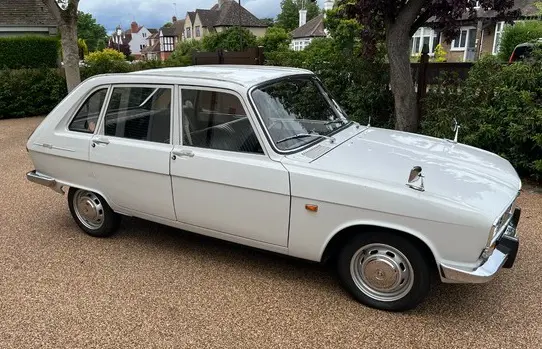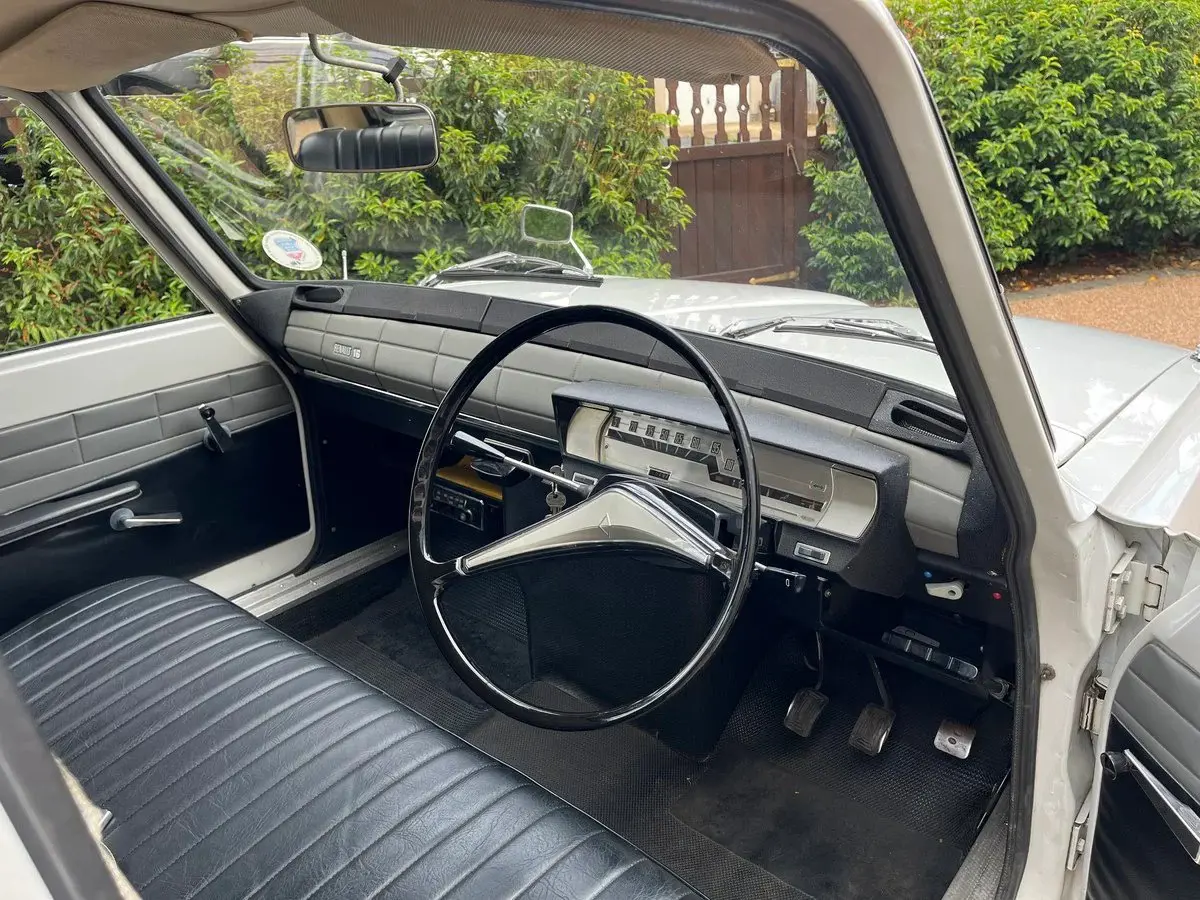RARER THAN RARE – 1966 RENAULT 16
12 August 2024
When Renault GB introduced the 16 to British motorists in the autumn of 1965, it would be fair to say it did not resemble any UK family saloon. To quote the advertisement: “The Renault l6 is a new breed of car. Compare the looks of the new Renault 16 with other 1 ½ litre cars”. This 1966 De Luxe is believed to be the oldest surviving British market example.

The 16’s origins begin in the late 1950s when Renault was contemplating a replacement for the slow-selling Frégate, a RWD six-seater that failed to rival the Citroën DS. However, Renault cancelled Project 114 – a six-cylinder saloon – replacement programme in early 1961. Instead, they embarked on Project 115, a FWD five-door car with a new engine to be made in a new factory at Sandouville.
Renault launched the 16 at the 1965 Geneva Motor Show, and it was later declared Car of The Year 1966. The 20th October 1965 marked its British debut at the London Motor Show, and visitors to Earls Court marvelled at its all-independent suspension, its aluminium 1,470cc engine with a sealed cooling circuit and its asymmetrical wheelbase. If the steering column gearchange and the De Luxe’s front bench seat were not unfamiliar to motorists of that era, the hatchback’s bodywork was certainly far from the norm,
The cheapest 16 version was the De Luxe at £888 9s 7d, and to have an impression of how different the 16 appeared to a semi-detached suburban motorist in 1966, take a look at 1 ½-litre British cars of that era. The Hillman Super Minx Estate and the Vauxhall Victor De Luxe FC Estate were £865 and £878, respectively, but their ethos was scaled-down Americana. The same applies to the Ford Cortina 1500 Super Estate at £831, while the Morris Oxford Series VI Traveller at £854 was for drivers who regarded The Kinks as embodying the end of civilisation.

As for the 16, it was perfect for the driver with a touch of the bohemian in their character. Car may have rudely stated it was “no oil painting”, but the Renault’s unconventional looks further appealed to the discerning owner. No UK-built car offered such seating configurations, including suspending the rear backrest from the grab handles. Nor did the British motor industry produce a FWD competitor to the 16 in 1966, as the Austin Maxi would not make its bow until 1969.
Perhaps the nearest British alternative to Renault was the BMC 1800 ‘Landcrab’. However, it was never available with a factory-fitted tailgate. The Guardian evaluated the £887 19s Morris-badged De Luxe version opposite the upmarket 16GL and opted for the Renault. The writer’s main complaint was about the French car’s handbrake— “it is even worse than the Morris’s, which I didn’t think would have been possible.” Nor was he enamoured of “the worst speedometer I have ever seen.”
Meanwhile, Autocar thought the latest Renault was “clearly a mature design of great merit” and Motor Sport believed: “As a fast, comfortable, easy-running, accommodating family car this is an outstanding newcomer”. The De Luxe may have lacked a certain amount of luxury but drivers who craved a cigarette lighter, a rear folding armrest, and separate reclining backrests could invest £919 17s 11d in the GL.
16 production ended in January 1980 after 1,845,959 units, but few survive in the UK; rust was a significant issue. This De Luxe was a star of the Renault Classic Car Club display at the 2015 NEC Lancaster Insurance Classic Motor Show when they won Lancaster Insurance’s ‘Best Stand’ prize. Its many fascinations include the strip speedometer, the mysterious switches that adorn the fascia, and its sheer charm.
And as the launch campaign boasted: “It’s more than an estate car. More than as a saloon. The Renault 16 is a new breed of car”.
With Thanks To: the owner for his permission to use the images in this blog. https://www.carandclassic.com/l/C1754234
